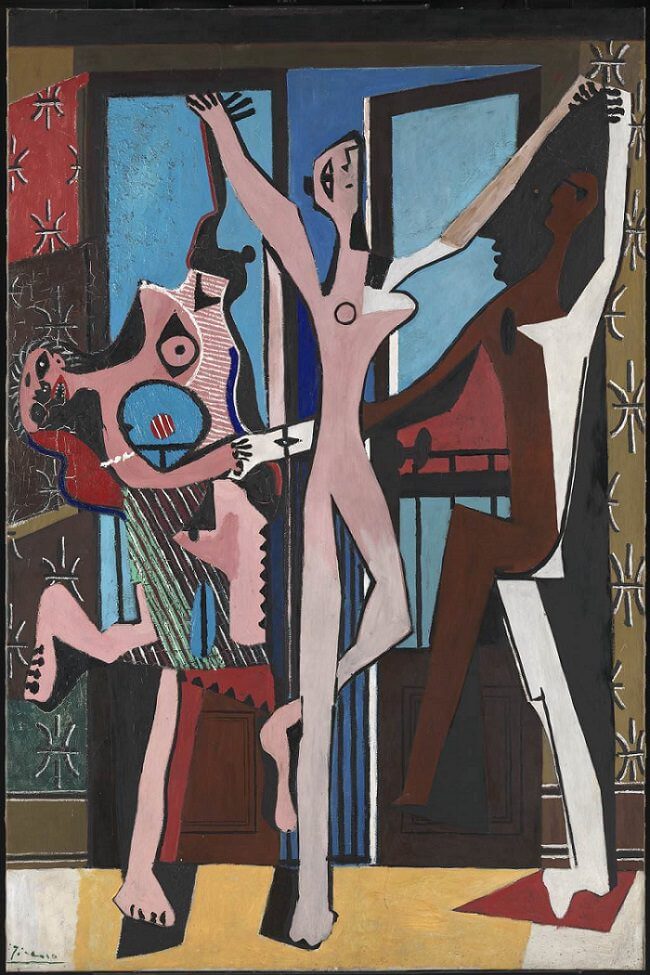Three Dancers, 1925 by Pablo Picasso

The Three Dancers was painted by Picasso in June 1925. The painting shows three dancers, the one on the right is barely visible. A macabre dance takes place, with the dancer on the left having her head bent at a near-impossible angle. The dancer on the right is usually interpreted as being Ramon Pichot, a friend of Picasso who died during the painting of Three Dancers. The one on the left is claimed to be Pichot's wife Germaine Gargallo with the one in the centre being Gargallo's boyfriend Carlos Casagemas, also Picasso's friend. Casagemas shot himself after failing to shoot Gargallo, twenty-five years before Pichot's death, and the loss of two of his best friends spurred Picasso to paint this chilling depiction of the love triangle.
Picasso painted The Three Dancers in Paris after a trip to Monte Carlo with his wife, ballet dancer Olga Khokhlova. At this time, Picasso was attracted to Andre Breton's Surrealism movement.This radical work marks Picasso's entry into Surrealism and descent into his disturbing depictions of the female form. However, he was never a fully signed up member of the Surrealism movement: his down-to-earth artistic response and individuality never truly submitted to the movement's Freudian concepts of supremacy of the subconscious state. Yet Surrealists emerging from the Dada movement claimed Picasso as their own, with the reproduction of Les Demoiselles d'Avignon (1907) in their 1925 manifesto to endorse his influence on their work. The Three Dancers is similar to Les Demoiselles a'Avignon in its revolutionary impact - yet it is not the elements of primitivism but the women's psychotic frenzy that is disturbing. The bodily distortions and maniacal grimaces, combined with the figures' pyramidal structure, surface again in the equally ferocious Crucifixion (1930).The characters are life size, as this massive picture measures seven feet by five feet.
















